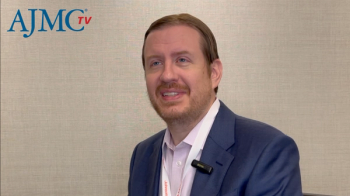
Low Risk of HIV Transmission Among Those Receiving ART
Key Takeaways
- ART significantly reduces HIV transmission risk in high-income countries, with an estimated risk of 0.00 per 100 couple years.
- The study included 2383 couples, with no linked transmissions from HIV-positive partners on ART, demonstrating ART's effectiveness.
A meta-analysis found a low risk of HIV transmission in people taking antiretroviral therapy (ART) in high-income countries.
ART has been used to treat HIV for more than 30 years since it was first approved by the FDA in 1987, and highly active ART became available in 1996.2 The treatment can prolong the life of those living with HIV, a condition that can greatly affect the health of those living with the condition. However, risk of transmission of HIV when individuals are using ART has been less consistent, with studies not always finding a 0% transmission rate. The researchers conducted a systematic review to estimate the overall risk of transmission in couples living in high-income countries where 1 partner has HIV and is taking ART. The certainty of the estimate was also evaluated.1
Studies that reported on couples with differing HIV status and reported on the outcome of sexual HIV transmission were included in the review. The individual with HIV could be taking any form of ART, including highly active ART. The other half of the couple could not have HIV and could not be using pre-exposure prophylaxis. Participants of any sexuality were included, and all participants were aged 18 years or older. Quantitative studies were included, whereas qualitative analyses were excluded. Subgroup analyses were conducted based on the type of sex reported by each couple.
There were 6 studies included in the review, with most studies conducted in Europe and Australia. There was 1 study that included data from Brazil and Thailand that was included in the final review because it did not separate data from high-income countries. There were 2383 couples included in the study, with data from 3578 couple years.
There were 19 individual transmissions in the studies, but none came from the index partner that was enrolled in the study. The overall risk estimate for HIV transmission was 0.00 (95% CI, 0.000-0.103) per 100 couple years. Heterosexual couples had a risk estimate of 0 (95% CI, 0.000-0.264) per 100 couple years and men who have sex with men had a risk estimate of 0 (95% CI, 0.000-0.169) per 100 couple years. All analyses had a statistical heterogeneity of 0%.
There were some limitations to this study. These results may only be generalizable to people with less than 200 copies/mL because the study included patients with HIV who had the condition for at least 6 months. The participants had adherence rates as low as 60%.
The researchers concluded that the study demonstrates no linked transmission of HIV between couples where 1 individual was living with HIV and that the overall risk of transmission was low. The findings could help in reevaluating current practices regarding individuals with HIV, including in blood donor viability, they concluded.
“This new review supports the ‘treatment as prevention’ theory that HIV cannot be transmitted if the person is undergoing treatment,” said Emma Grundtvig Gram, co-author of the study, in a statement to The American Journal of Managed Care®. “This points to the fact that it can be considered safe to have sexual intercourse with someone who is HIV-positive and in treatment.”
"To reduce HIV incidence and improve the management of prevalent infections, it might be a wise strategy to gradually remove institutional stigmas and discriminatory barriers faced by people with HIV and their non-infected partners," the authors wrote. "We encourage researchers, policymakers, and other relevant professionals to actively and continuously support these changes."
References
- Gram EG, Biering IE, Olsen O, Gram GJ. Evidence of zero-risk transmission of HIV in the era of antiretroviral therapy: a systematic review and meta-analyses. Public Health. 2025;239:149-155. doi:10.1016/j.puhe.2024.12.008
- Watson S, Wiginton K. The history of HIV treatment: antiretroviral therapy and more. WebMD. September 18, 2024. Accessed January 21, 2025. https://www.webmd.com/hiv-aids/hiv-treatment-history
Newsletter
Stay ahead of policy, cost, and value—subscribe to AJMC for expert insights at the intersection of clinical care and health economics.

















































